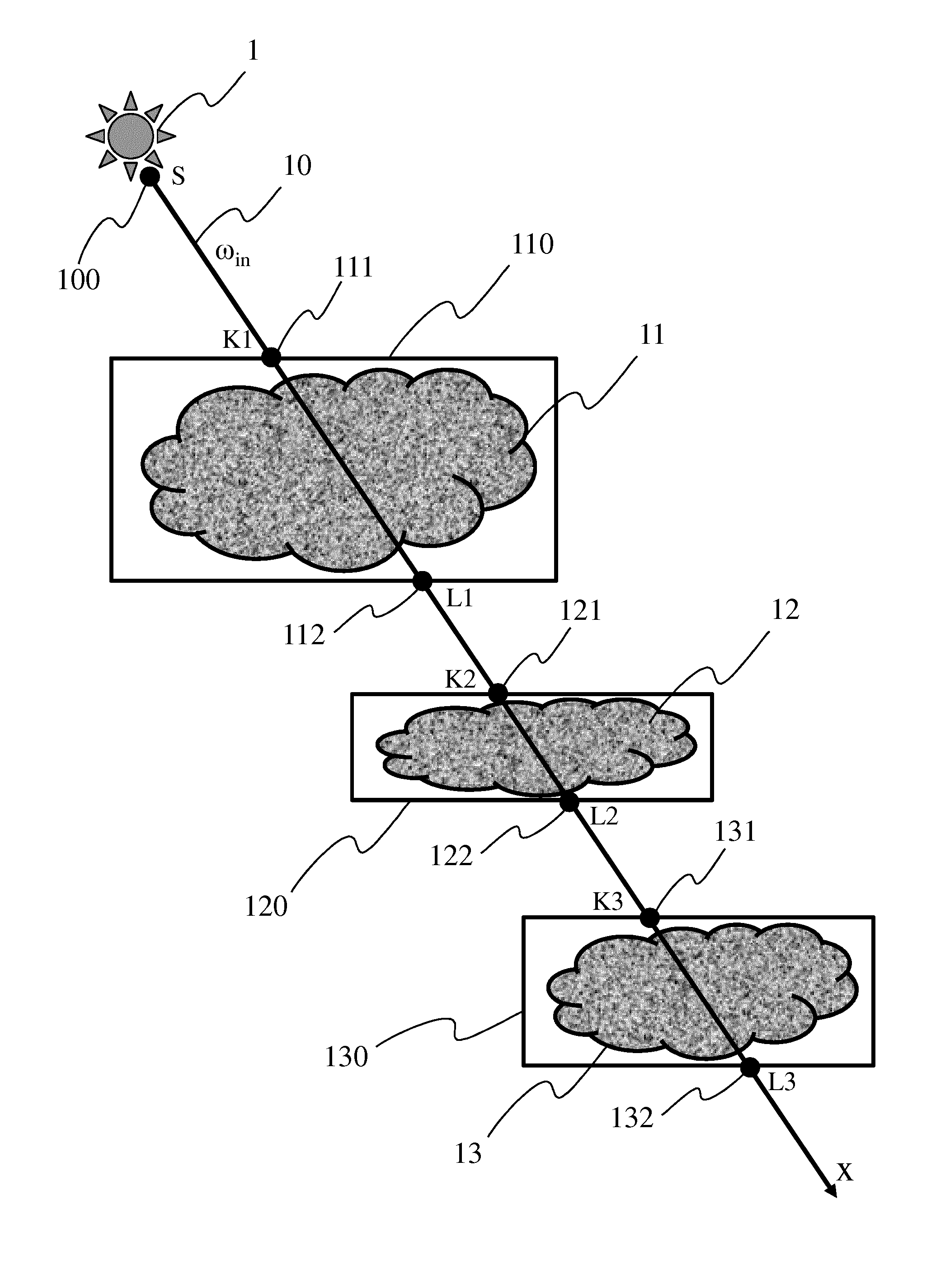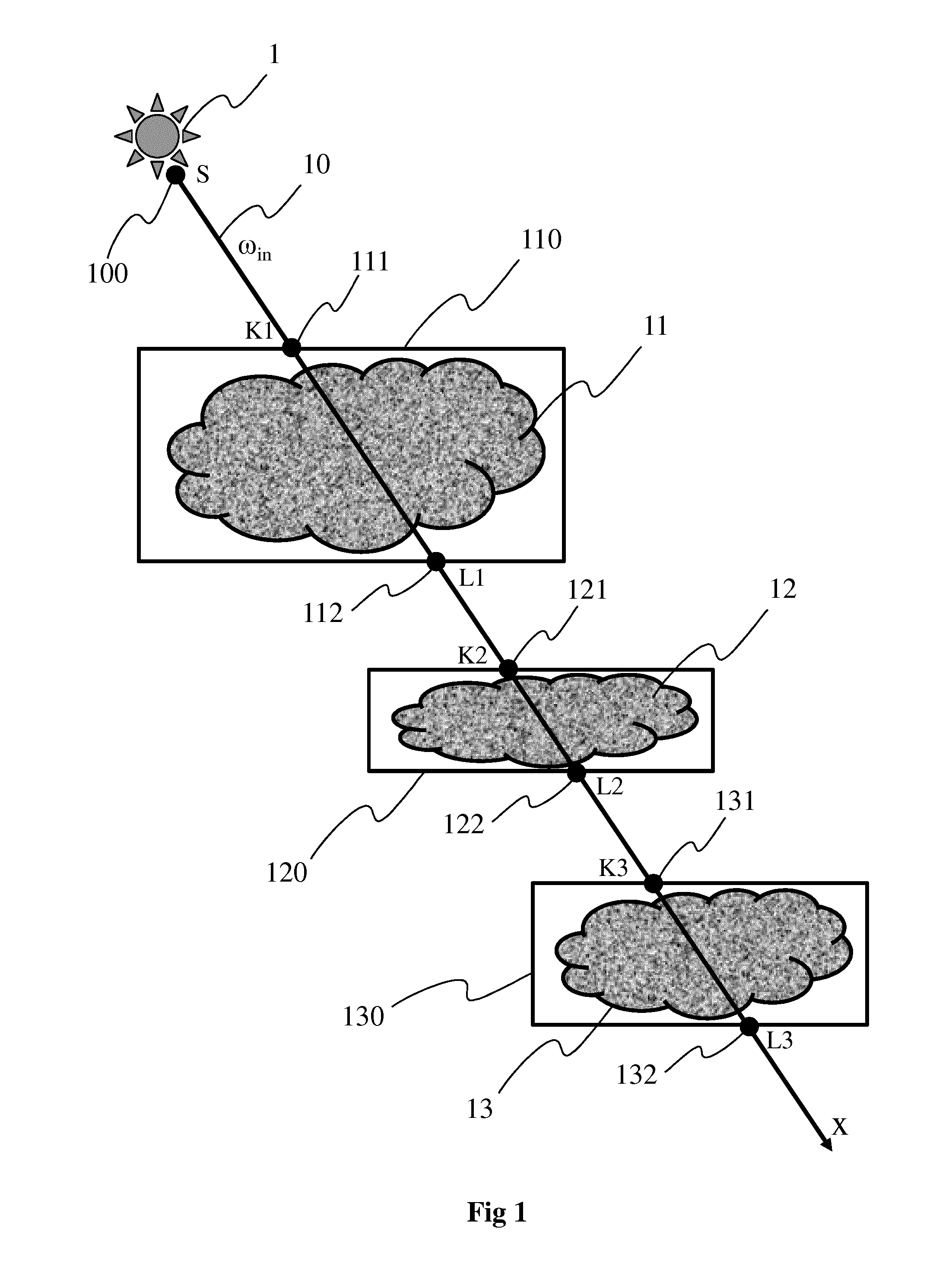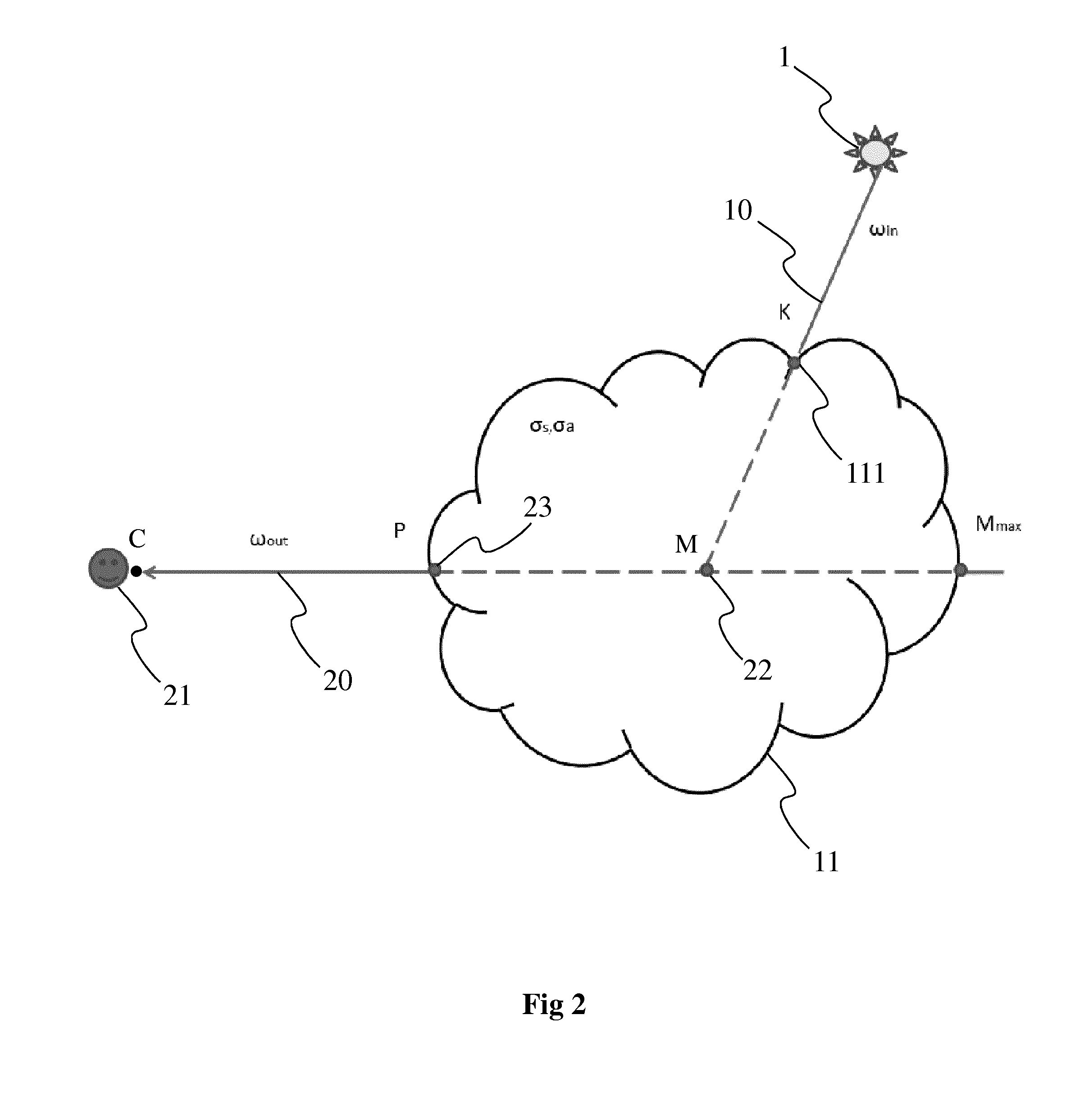Method and device for estimating light scattering
- Summary
- Abstract
- Description
- Claims
- Application Information
AI Technical Summary
Benefits of technology
Problems solved by technology
Method used
Image
Examples
first embodiment
[0045]FIG. 4A illustrates a first embodiment for determining a pseudo-metric function d(x) 42 representative of the distance along the light ray 10. The function d(x) 42 is represented with a segmented line on FIG. 4A. The pseudo-metric function d(x) 42 is such that the distance along the light ray increases when inside a participating medium 11, 12 and 13 and is stationary outside any participating media. Unlike a metric function (representative of an Euclidian distance) which is strictly increasing, a pseudo-metric function has the advantage of being monotonic with one or more stationary parts. The pseudo-metric function is advantageously determined according to the intersection points K1 111, L1 112, K2 121, L2 122, K3 131 and L3 132 between the light ray 10 and the participating media 11, 12, 13, with regard to x. For an element M1 (a point, a particle or a ray sample if the light ray 10 is discretized into a number Y of samples) belonging to the light ray 10 and to the first pa...
second embodiment
[0047]FIG. 4B illustrates a second embodiment for determining the pseudo-metric function d(x). As to simplify and speeding up the computations needed for determining d(x), the square function v(x) defined with regard to FIG. 4A is first expressed with second projection coefficients representing the function v(x) 410 in a functions base, for example a DCT basis. The function v(x) once projected in the functions base (composed of N basis functions bi) is defined with:
v(x)=Σi=0Ndibi(x) equation 5
[0048]wherein di is the ith coefficient of the basis function bi defined with:
di=∫(x)bi(x)dx equation 6
[0049]where v(x)=1 or any value different from 0 if x is within a participating medium and 0 otherwise. To obtain the pseudo-metric function d(x), v(x) is integrated, which gives:
d(x)=∫0xΣdibi(x)dx equation 7
d(x)=Σdi∫0xbi(x)dx equation 8
d(x)=Σdi(Bi(x)−Bi(0)) equation 9
[0050]where Bi is the primitive of bi and Bi(0) is the primitive of bi at the level of the light source, i.e. at point S 1...
PUM
 Login to View More
Login to View More Abstract
Description
Claims
Application Information
 Login to View More
Login to View More - R&D
- Intellectual Property
- Life Sciences
- Materials
- Tech Scout
- Unparalleled Data Quality
- Higher Quality Content
- 60% Fewer Hallucinations
Browse by: Latest US Patents, China's latest patents, Technical Efficacy Thesaurus, Application Domain, Technology Topic, Popular Technical Reports.
© 2025 PatSnap. All rights reserved.Legal|Privacy policy|Modern Slavery Act Transparency Statement|Sitemap|About US| Contact US: help@patsnap.com



